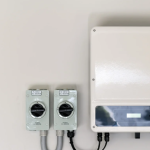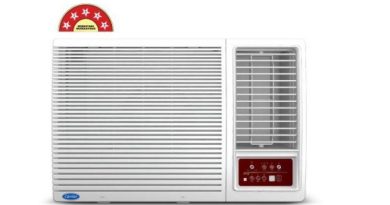WHERE DO INVERTERS COME FROM?
An inverter is one of the most important components of a solar energy system. It’s a gadget that transforms direct current (DC) power generated by solar panels into alternating current (AC) electricity used by the electrical grid. Electricity is kept at a constant voltage in one direction in DC. As the voltage in the circuit changes from positive to negative, electricity flows in both directions. Inverters are part of a group of devices known as power electronics that regulate the flow of electricity. 48V golf cart batteries
Fundamentally, an inverter converts DC to AC by rapidly flipping the direction of a DC input. A DC input becomes an AC output as a result. Filters and other electronics can also be used to provide a voltage that fluctuates as a clean, repeating sine wave and can be fed into the power grid. The sine wave is the form or pattern that voltage takes over time, and it’s the power pattern that the grid can utilize without causing damage to electrical equipment designed to function at specific frequencies and voltages.
The earliest mechanical inverters were invented in the nineteenth century. A spinning motor, for example, might be used to alternate between connecting the DC source forward and backward. Today, transistors are used to construct electrical switches, which are solid-state devices with no moving elements. Semiconductor materials such as silicon or gallium arsenide are used to make transistors. They regulate the flow of electricity in response to electrical impulses from outside.
Inverter with battery
Batteries are necessary to store the energy created so that it may be utilized when needed later. Inverter battery price in India 2022 have dropped by 80% in the previous seven years and are likely to drop by another 40-50% in the next five. However, in the price-sensitive Indian market, it is still deemed pricey. Because there isn’t as much demand for lithium batteries in India as there is for solar panels, costs haven’t dropped as quickly. The only solution to India’s expanding transmission and distribution challenges appears to be storage. Exide, Luminous, Su-Kam, and Okaya are some of the most widely used solar batteries in India. Solar storage costs between INR 6 and INR 10 per kilowatt-hour. Solar batteries from Luminous are developed with a C10 capacity and come in models ranging from 20 Ah to 200 Ah, with a 3 year and 5-year replacement guarantee.
Inverters and grid services
Grid operators provide a variety of grid services to control power supply and demand on the electric system. Grid services are operations that grid operators conduct to keep the system balanced and better manage power transmission.
Smart inverters can respond in a variety of ways when the grid ceases performing as expected, such as when voltage or frequency variations occur. Small inverters, such as those linked to a home solar system, are expected to stay on through or “ride through” minor voltage or frequency fluctuations, but if the interruption lasts for an extended period or is bigger than typical, they will disconnect from the grid and shut down.





